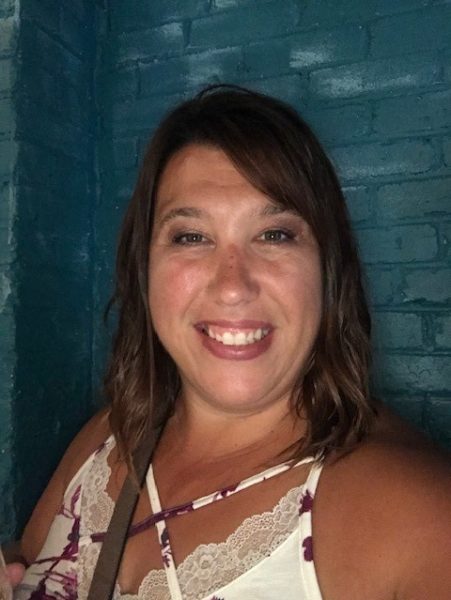By Guest Contributor Shannon Cotton, NBCT
Senate Bill 5395, known as the comprehensive sexual health bill, was a hot topic in Olympia this Legislative session. A few weeks ago I spent 90 minutes watching TVW listening to the state senators make comments about the amendments before a roll call vote which passed the bill 27 to 21.
Legislators talked about constituents who felt as if “government isn’t listening to what they want.” For every parent who wants to exercise their rights to control the sexual health education of their child another family desperately wants their children to have access to health-enhancing information. Shouldn’t our public school system make information accessible to all as long as provisions are made to allow a family to opt out if they wish?
As a National Board Certified health teacher with 16 years experience teaching sexual health to middle school students in Washington state, I have been fielding questions and attempting to help others understand what this bill means to student learning and overall student health. I have spent more hours than I care to admit trying to clear up misconceptions and disprove outrageous propaganda created to spark fear into parents on social media with information that are outright lies.
Here are some facts about ESSB 5395:
This bill changes an existing law that allowed districts to choose whether or not to offer sexual health to requiring comprehensive sexual health that is consistent with state health standards and that requires affirmative consent curriculum. In other words, parents can opt their child out of receiving this content.
By September 1, 2021, every public school must provide comprehensive sexual health that is evidence informed, medically and scientifically accurate, age appropriate and inclusive for all students. That includes information and skills-based instruction that includes both abstinence and other methods of prevention of unplanned pregnancy and STDs. In other words, we getting rid of myths about storks dropping babies from the sky and misnomers about what “sex” really is.
What does “evidence-informed” mean? This means that public schools choose a program that is informed by scientific research and effective practices.
What does “medically and scientifically accurate” mean? It means all information taught must be verified or supported by research in compliance with scientific methods, published in peer reviewed journals, where appropriate, and is recognized as accurate and objective by professional organizations with expertise in the field of sexual health, like the American College of Obstetricians and Gynecologists, the Department of Health (DOH) and the Centers for Diseases Control and Prevention.
Sexual health curriculum taught must encourage healthy relationships that are based on mutual respect free from violence, coercion, and intimidation. It must teach students how to identify and respond to attitudes and behaviors that contribute to sexual violence and emphasizes the importance of affirmative consent.
I’m going to say it louder for those in the back…OUR KIDS NEEDS TO LEARN ABOUT CONSENT! They need to know that what consent means, what it looks and sounds like and that NO MEANS NO! Every student. The kindergartener learning about personal space. The third grader being taught about saying “No” and role playing how to use body language and an assertive tone of voice. The middle school student learning about sexual harassment and what consent looks like in healthy relationships. To the high schooler learning about how drugs, alcohol and consent don’t mix well.
School districts will adopt or develop a curriculum they feel best meets the needs of their students and is age appropriate as long as it also meets the requirements of the law and Washington State health and fitness standards. OSPI will work with the DOH to develop a list of comprehensive sexual health curricula consistent with standards and this proposed law that districts can use as a guide.
This bill also upholds a parent’s right to notification and excusal. The 2008 Healthy Youth Act requires schools to provide at least one month’s notice to parents/guardians before teaching sexual health education as well as the opportunity to review the curriculum being used and allows parents to excuse or “opt out” their child from sexual health curriculum being taught.
The concern I have heard over and over again from parents in regards to this bill is that educating our youngest learners about sexual health will sexualize them. Just last week a parent told me “I don’t want my kindergartner to learn about condoms, I want them to color.” I wouldn’t either…that’s not age appropriate! Teaching them about the names and functions of their bodies is not sexual, it’s science and may make children less vulnerable to sexual abuse and early education can lead to empowerment.
My advice to concerned parents is this –
- Talk to your school boards about the process they’ll take in choosing an age appropriate sexual health curriculum.
- Start the sexual health conversations at home.
- Ask questions and hold schools accountable for upholding your parental rights to notification.
- Finally, exercise your right to opt your student out if you don’t feel that it’s what’s best for your child. As you exercise that right though, remember that every parent should have the same choice and opportunities for their kids.
Teaching comprehensive sexual health throughout a student’s school experience is a life skill that will empower kids to make healthy choices and help prevent future victimization, lifelong trauma and reduce sexual assaults.

Shannon Cotton is a National Board Certified Health teacher in Camas, Wa. She teaches 6th-8th grade health and fitness at Liberty Middle School.

Shannon thank you for sharing! It’s funny because I have also been working on a post about this topic. I work with many parents from immigrant backgrounds and so have heard various things about this law as well. It was interesting to hear things from the perspective of someone who teaches sexual education. I hope my article will work with yours to create a multidimensional perspective on this new law, because you’re right, this law has been a big topic of concern amongst parents.
I love how you’ve shown what age-appropriate looks like at different levels.
Every year I hand out the parent “opt-out” forms. Then the parents ask what the curriculum looks like for fifth grade. I tell them, and they say, “Oh. That’s not a problem at all.”
I think I’ve had one student opt out. Ever.
One trick we use at our school is we had out the form at fall conferences. That way the parents can ask any questions right there. It works so much better than mailing them out!
Thank you Janet! I agree completely…open dialogue about what the curriculum actually is makes a world of difference! In my 16 years teaching i think I’ve had maybe 10 students opt out, it really is rare. That’s what was so frustrating about the misinformation that was being shared by community members and, even worse, lawmakers as they discussed this bill.
I’m so proud of you! This is informative and helpful. Thank you for working so hard to keep the curriculum current and safe! 🙌🏼
Thank you Gina, and thank you for taking the time to read and pass this along to those who follow you!